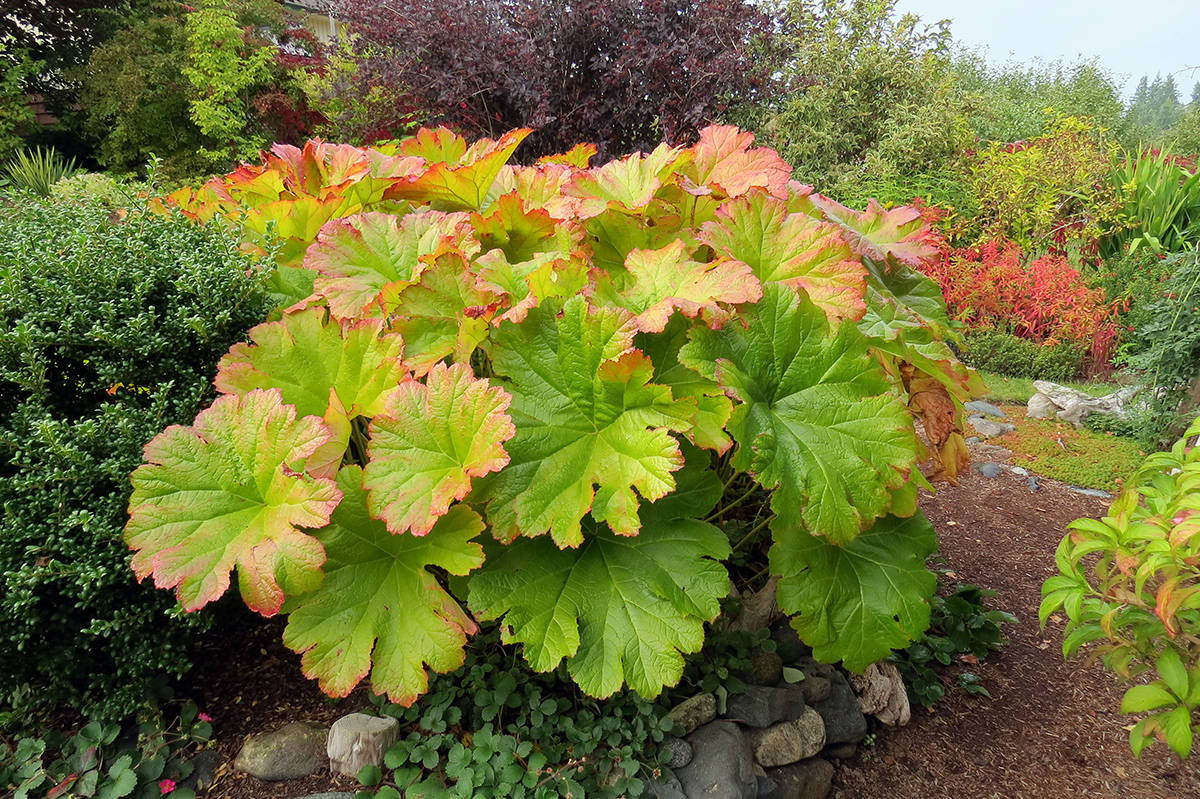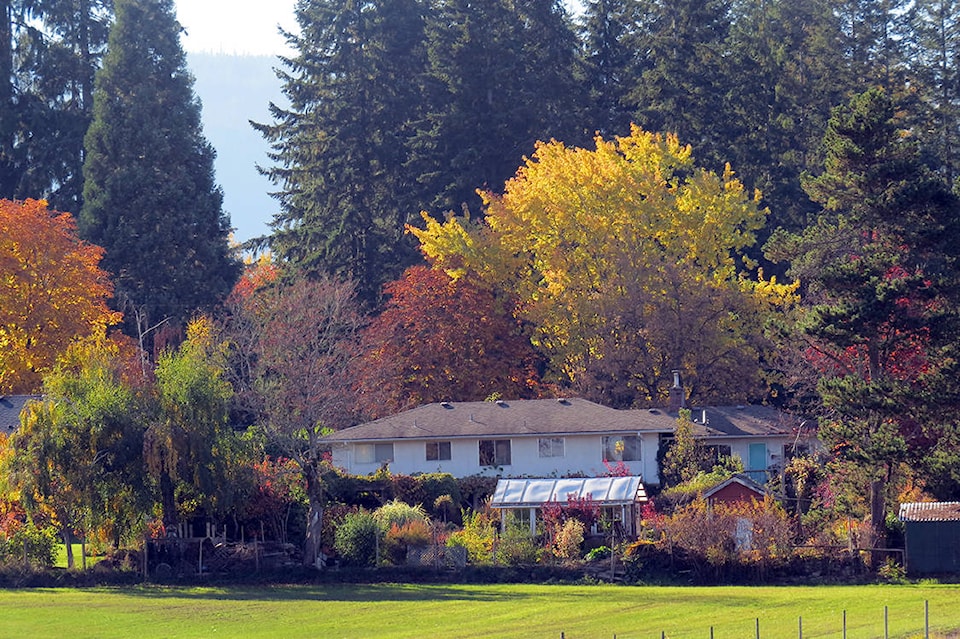Leslie Cox
Special to The Record
Thank goodness for colour in autumn!
It makes this season bearable as summer blooms are fading and the deciduous plants and trees are beginning their winter shutdown. Vibrant coloured leaves certainly give pleasure amongst growing death and decay as many plants respond to less daylight hours and cooling temperatures.
But have you ever wondered how those red, orange, yellow and burgundy colours develop from what were once lush summer-green leaves just a few weeks before? The answers lie in science. Naturally. And it all starts with chlorophyll.
Everyone should know this biological material – the green pigment contained in the chloroplasts of leaves responsible for photosynthesis. This is the driving force behind a plant’s ability to manufacture food using sunlight to convert carbon dioxide taken in through its leaves and water containing necessary nutrients pulled up from the soil.
But what we do not see reflected in leaf colour over the summer are the other pigments also found in the chloroplasts: anthocyanin, carotene and xanthophyll.
Anthocyanin is the pigment responsible for red, purple and blue colours because it absorbs blue, blue-green and green from the light spectrum. Extreme sensitivity to acid/alkaline levels (pH) in the sap of the plant where this pigment is found determines the colour displayed. Low pH (acid) produces red; high pH (alkaline) produces purple.
Carotene is the pigment responsible for orange, orange-red and yellow colours because it absorbs ultraviolet, violet and blue from the light spectrum.
But when both carotene and chlorophyll occur in the same leaf, they combine to remove the red, blue and blue-green colours when sunlight falls on the leaf. The light then reflected by the leaf appears green. In this case, the carotene pigment is an accessory absorber, transferring the energy it garners from the sun to chlorophyll. And because carotene is a more stable compound than chlorophyll, it remains in the leaf after the chlorophyll disappears…causing the leaf to turn shades of orange and yellow.
Xanthophyll. This is another accessory pigment which helps to absorb chlorophyll in certain plants in low light situations. This pigment is part of the carotene group but contains oxygen where the other carotenes do not. Hence, it produces yellow tones rather than orange and orange-red colours exuded from the oxygen-starved carotene pigment.
Now, as daylight hours shorten into the autumn season and temperatures start to fall, the plants are triggered into producing a cork-like membrane across the end of their leaf stems at the point where the stems are attached to the branches. This separation layer forms a very tight seal between leaves and plant. It effectively stops water from entering the leaves from the plant and manufactured food from leaving the leaves and entering the plant. The plant either begins to die back from lack of food if it is an annual or herbaceous perennial, or begins to enter dormancy if it is a deciduous plant. With no water coming from the plant to renew the chlorophyll in its leaves, this pigment begins to disappear.
At that point, the plants whose leaves contain the sugar-saturated anthocyanin pigment turn brilliant shades of red and purple as autumn progresses.
Plants whose leaves contain the oxygen-starved carotene pigment are lit up through the fiery orange tones…from apricot through to deep orange-red.
But what about those brown-coloured leaves, like those found on oak trees?
This colour is produced from a build-up of waste products in the leaves and a polyphenol compound called tannin. Found in many plant species, tannin compounds assist in regulating plant growth.
Furthermore, tannins are also valuable in protecting a plant from predation. They will trigger the production of a biological pesticide to deal with a specific pest, as oak trees do for gypsy moth (Lymantria distra) infestations.
Amazing.
Leslie Cox co-owns Growing Concern Cottage Garden in Black Creek. Her website is at www.duchessofdirt.ca and her column appears every second Thursday in the Record throughout the spring and summer months.

